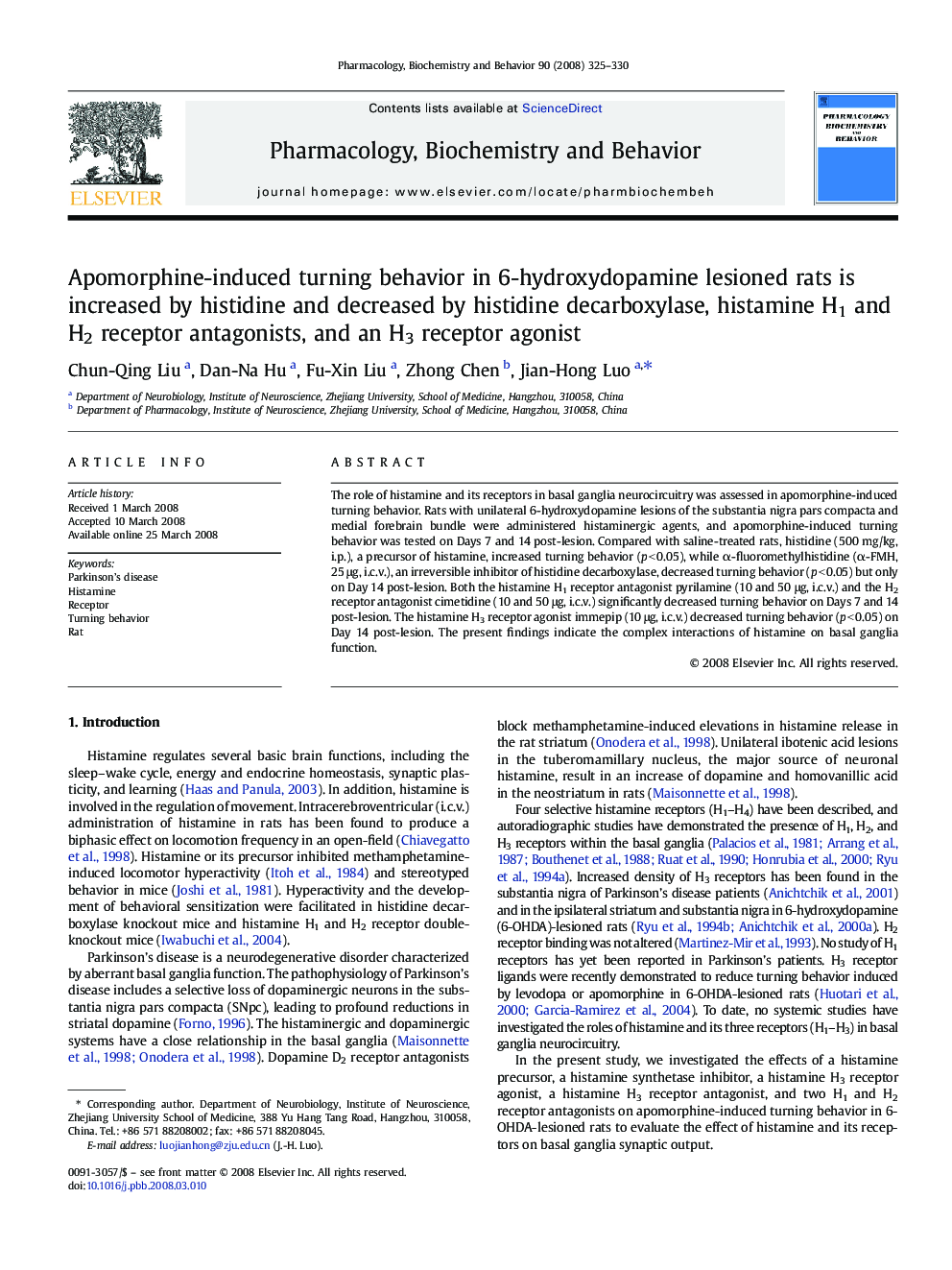| کد مقاله | کد نشریه | سال انتشار | مقاله انگلیسی | نسخه تمام متن |
|---|---|---|---|---|
| 2013890 | 1067135 | 2008 | 6 صفحه PDF | دانلود رایگان |

The role of histamine and its receptors in basal ganglia neurocircuitry was assessed in apomorphine-induced turning behavior. Rats with unilateral 6-hydroxydopamine lesions of the substantia nigra pars compacta and medial forebrain bundle were administered histaminergic agents, and apomorphine-induced turning behavior was tested on Days 7 and 14 post-lesion. Compared with saline-treated rats, histidine (500 mg/kg, i.p.), a precursor of histamine, increased turning behavior (p < 0.05), while α-fluoromethylhistidine (α-FMH, 25 μg, i.c.v.), an irreversible inhibitor of histidine decarboxylase, decreased turning behavior (p < 0.05) but only on Day 14 post-lesion. Both the histamine H1 receptor antagonist pyrilamine (10 and 50 μg, i.c.v.) and the H2 receptor antagonist cimetidine (10 and 50 μg, i.c.v.) significantly decreased turning behavior on Days 7 and 14 post-lesion. The histamine H3 receptor agonist immepip (10 μg, i.c.v.) decreased turning behavior (p < 0.05) on Day 14 post-lesion. The present findings indicate the complex interactions of histamine on basal ganglia function.
Journal: Pharmacology Biochemistry and Behavior - Volume 90, Issue 3, September 2008, Pages 325–330